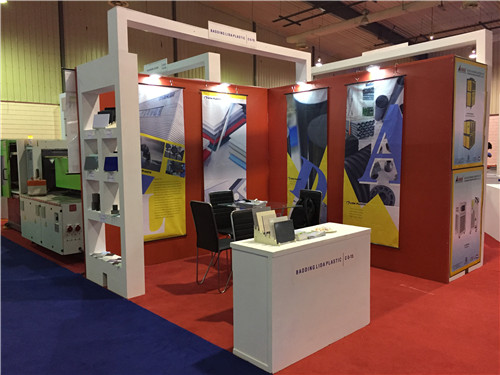Oktoba . 18, 2024 17:05 Back to list
Comparative Analysis of PPR Pipes and Fittings for Modern Plumbing Solutions
Understanding PPR Pipes and Fittings A Comprehensive Guide
In the realm of plumbing and construction, various materials are used for piping, each with its own set of properties, advantages, and applications. Among these materials, Polypropylene Random Copolymer, commonly known as PPR, has gained popularity due to its unique characteristics and versatility. This article will delve into the world of PPR pipes and fittings, exploring their properties, benefits, installation, and applications.
What are PPR Pipes?
PPR pipes are made from polypropylene random copolymer, a thermoplastic polymer known for its strength, durability, and resistance to temperature and chemical corrosion. This material is non-toxic and complies with health and safety standards, making it an excellent choice for various applications, including potable water systems. PPR pipes are typically available in green and white colors and can be found in multiple diameters and lengths to cater to different needs.
Key Properties of PPR Pipes
1. Durability PPR pipes are resistant to cracks, abrasion, and impacts, ensuring a long service life. They can withstand extreme temperatures, typically functioning effectively in environments ranging from -20°C to 90°C.
2. Chemical Resistance The chemical inertness of PPR makes it suitable for transporting various substances, including both acidic and alkaline solutions. This quality reduces the risk of pipe degradation and extends the lifespan of the system.
3. Lightweight Unlike traditional metal pipes, PPR pipes are lightweight, making them easier to handle and install. Their low density also contributes to lower transportation costs.
4. Thermal Insulation PPR pipes have low thermal conductivity, minimizing heat loss in hot water systems and preventing condensation in cold water applications. This feature enhances energy efficiency.
5. Easy Installation PPR piping systems utilize a fusion welding process, which creates seamless joints that are as strong as the pipes themselves. This connection method reduces the risk of leaks and enhances the system’s integrity.
Benefits of Using PPR Pipes
The advantages of employing PPR pipes in plumbing and construction projects are manifold
- Cost-effectiveness Although the initial cost of PPR pipes may be slightly higher than that of traditional materials, their longevity and minimal maintenance requirements result in lower life-cycle costs.
ppr pipes and fittings

- Environmentally Friendly PPR is recyclable and can be reused, contributing to a reduction in environmental impact compared to non-recyclable materials
.- Health and Safety Being free from toxic substances such as lead or cadmium, PPR pipes ensure a safe and healthy water supply for both residential and commercial applications.
- Versatility PPR pipes and fittings can be used for a wide range of applications, including hot and cold water systems, heating systems, irrigation, and industrial fluid transport.
Installation of PPR Pipes and Fittings
Installing PPR pipes requires specific techniques to ensure proper setup and prevent future problems. The commonly used method is heat fusion welding, where the ends of the pipes and fittings are heated and then joined together to form a permanent bond. This process ensures that the joints remain leak-proof over the years.
Preparation for installation includes cutting the pipes to the required lengths, deburring the edges to eliminate sharp points, and then aligning the pieces accurately. During the welding process, it is vital to maintain the correct temperature and pressure for the specified duration to achieve a strong bond.
Applications of PPR Pipes
PPR pipes are widely used in various sectors, including
- Domestic Plumbing For transporting drinking water and hot water systems in homes. - Industrial Applications For transporting chemicals and liquids in manufacturing processes.
- Heating Systems For in-floor heating systems, radiators, and heating networks.
- Irrigation Systems In agriculture for efficient water distribution.
Conclusion
PPR pipes and fittings represent a modern solution to many plumbing and construction challenges. Their durability, chemical resistance, and ease of installation make them an excellent choice for both residential and commercial applications. As the demand for sustainable and efficient plumbing solutions increases, PPR products stand out as reliable and environmentally friendly options, meeting the needs of today's builders and consumers alike. Whether you’re planning a new installation or upgrading an existing system, considering PPR pipes could greatly enhance the efficiency and longevity of your project.
-
Premium PVC Soft Sheets: Clear, Flexible & Durable
NewsAug.12,2025
-
Premium PVC Round Rods: Durable, Chemical Resistant, Easy to Machine
NewsAug.11,2025
-
PP U-channel: Chemical-Resistant, Lightweight & Durable
NewsAug.10,2025
-
Transparent PVC Pipe: Clear Flexible Tubing for Fluids
NewsAug.09,2025
-
Durable PP Rigid Sheet: Versatile & High-Quality Plastic Panels
NewsAug.08,2025
-
Premium Glossy PP Rigid Sheet – Durable & Versatile
NewsAug.07,2025

